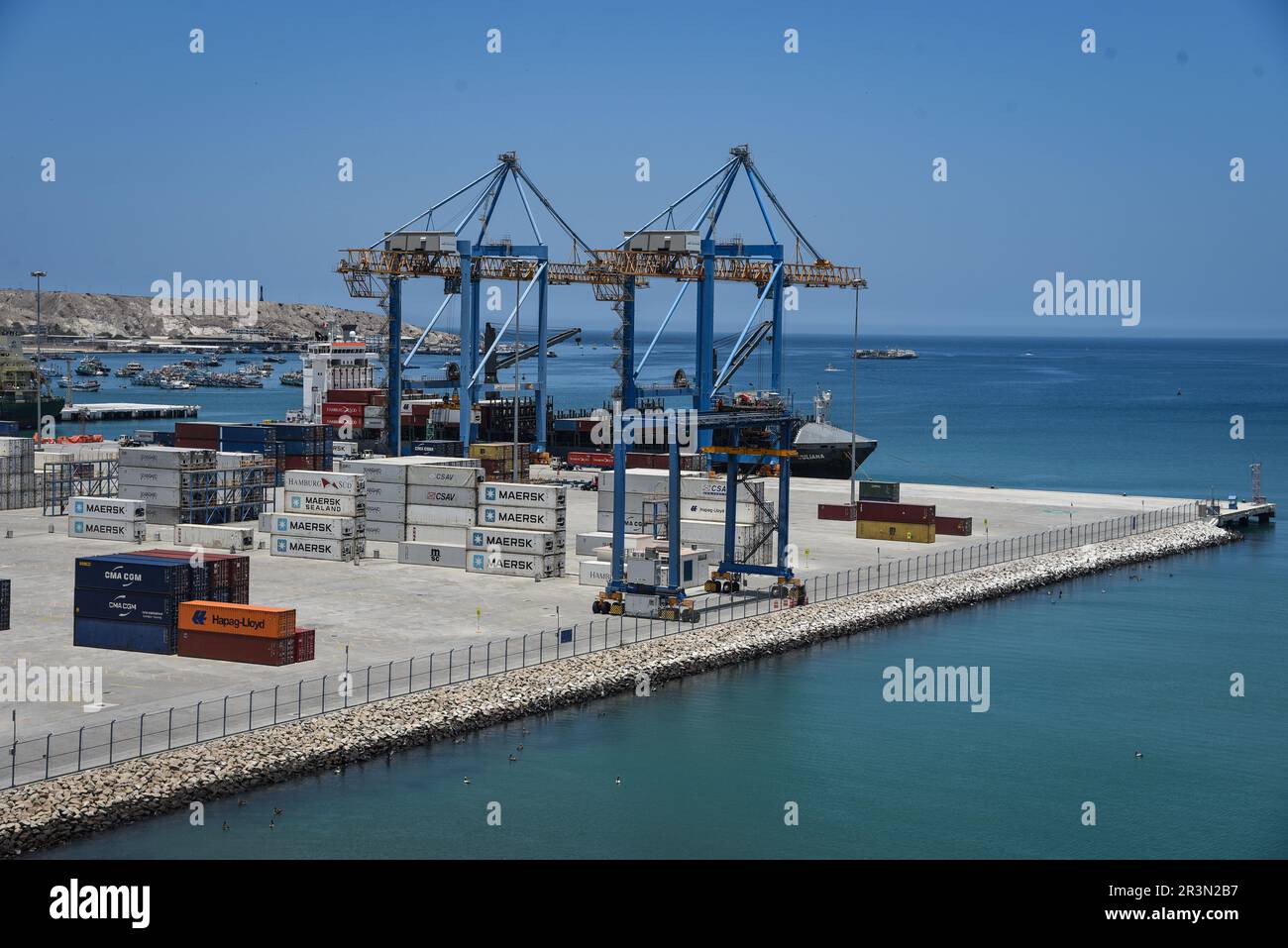Nicolas Remene / Le Pictorium - El Nino phenomenon on the northern coast of Peru - 16/10/2018 - Peru / Piura / Islilla - Isla Foca - The port te

Image details
Contributor:
LE PICTORIUM / Alamy Stock PhotoImage ID:
2R3N2B7File size:
69.1 MB (3.3 MB Compressed download)Releases:
Model - no | Property - noDo I need a release?Dimensions:
6016 x 4016 px | 50.9 x 34 cm | 20.1 x 13.4 inches | 300dpiDate taken:
16 October 2018Photographer:
Le PictoriumMore information:
Nicolas Remene / Le Pictorium - El Nino phenomenon on the northern coast of Peru - 16/10/2018 - Peru / Piura / Islilla - Isla Foca - The port terminal of Paita in the Piura region on October 16, 2018. It is the second national port, after Callao, with the largest movement of containers in the country with almost 400 ships per year. Squid, frozen fish, shrimp and fruit (mangoes, bananas, grapes, avocados, etc.) are the main products exported. Paita is one of the coastal cities strongly impacted by the El Nino phenomenon ---------------------------------------- El Nino phenomenon on the northern coast of Peru North of Lima in Peru and along almost 1300 km of coastline, many villages are periodically subjected to the climatic phenomena known as El Nino and La Nina. The latter occurs more often but is much weaker. As for El Nino, it returns every 3 to 7 years. It is the result of disturbances in the oceanic and climatic system in the equatorial Pacific, particularly on the Peruvian and Ecuadorian sides of South America. This phenomenon, which has a very important influence on the global climate, results in a surge of warm water in the Pacific Ocean and a rise in water levels that can lead to torrential rains, major floods and landslides. These extreme weather events have had dramatic consequences for many of the villages along the coastline. Many of these villages are fishing villages where artisanal fishing is an essential part of the local economy, and El Nino has tended to warm surface waters, resulting in a decrease in plankton and therefore fish, disrupting the entire food chain. In recent decades, the El Nino phenomenon has reappeared several times, affecting ecosystems that are already particularly vulnerable to climate change and causing a massive migration of populations subject to the climatic hazards of this coastal area of Peru.